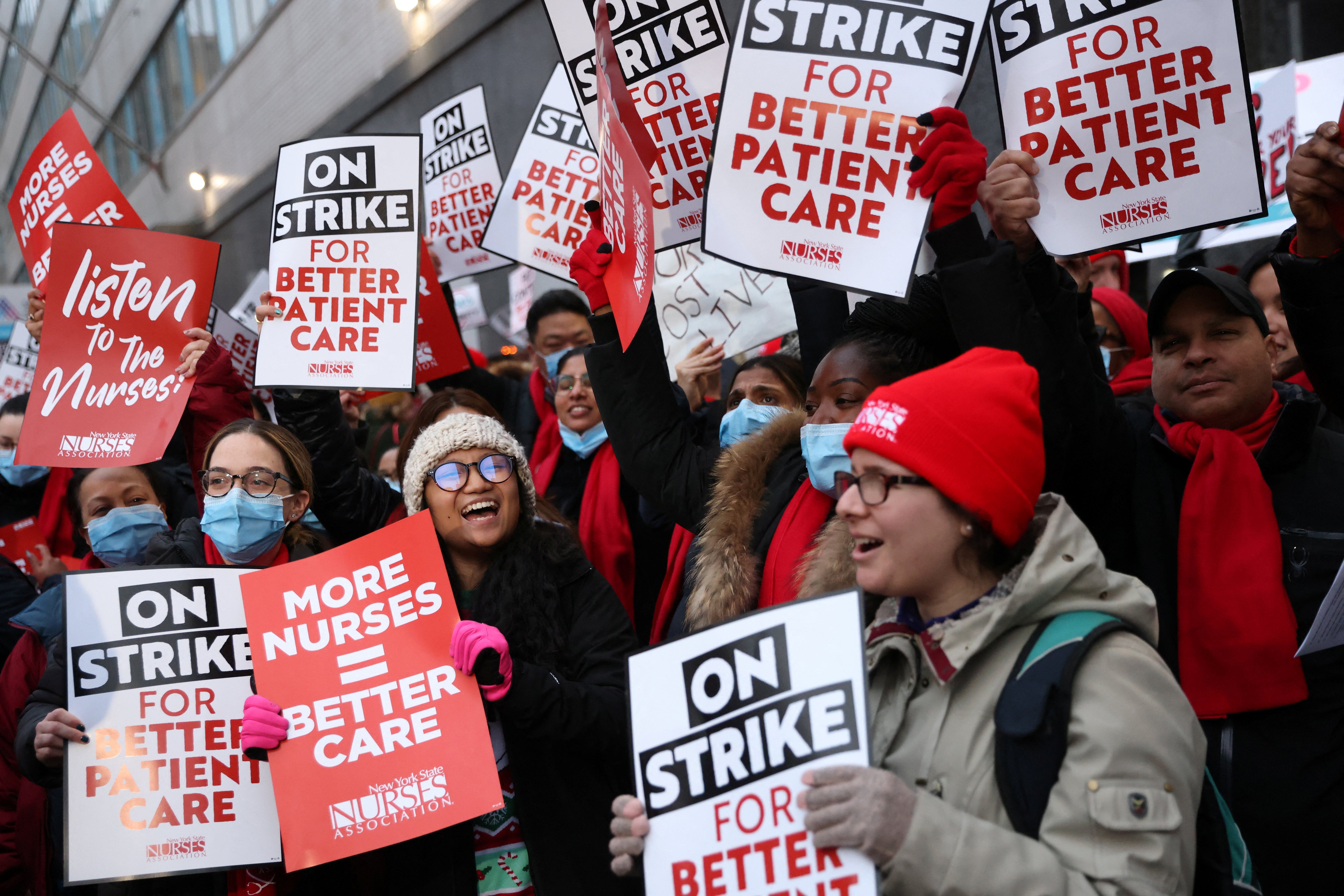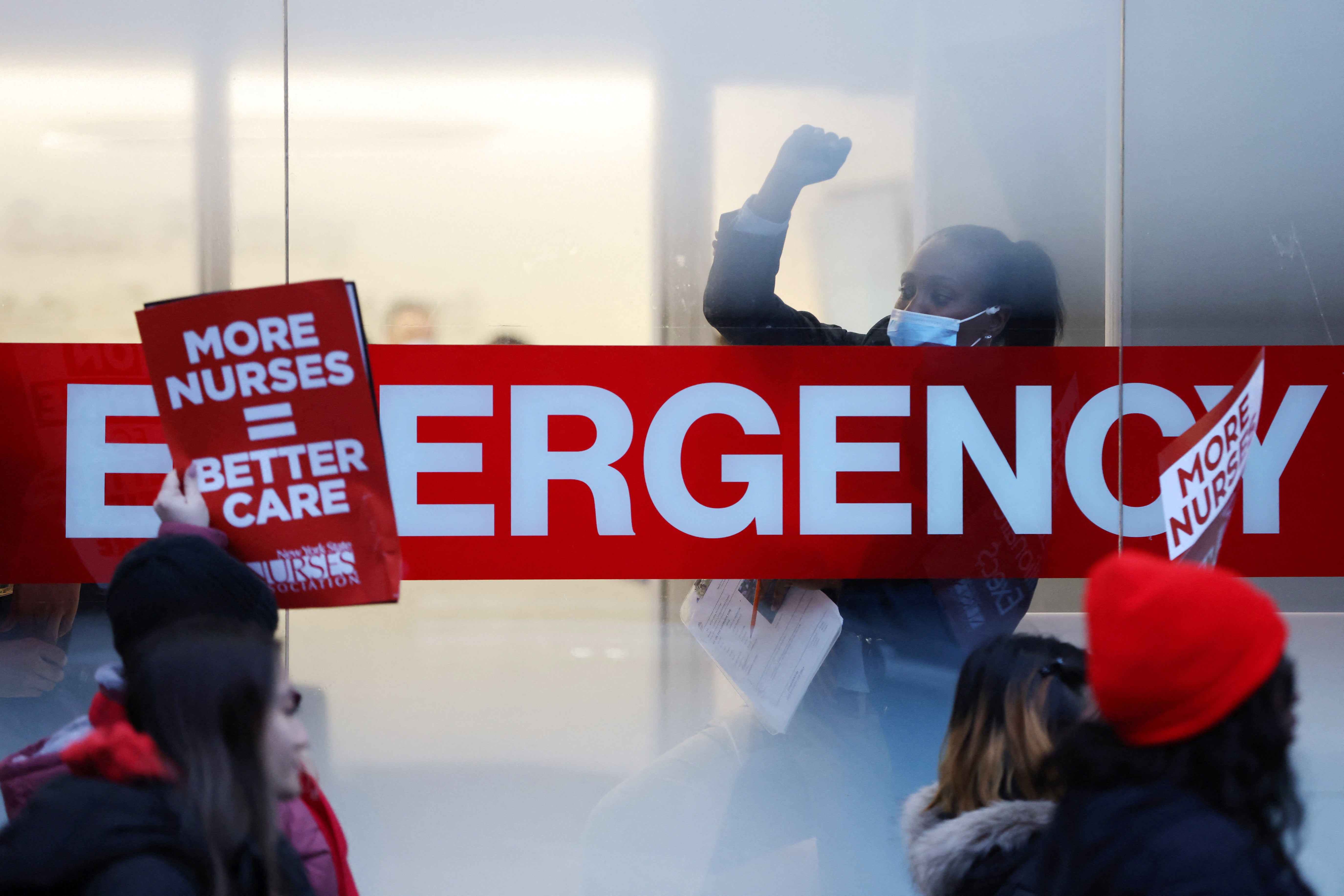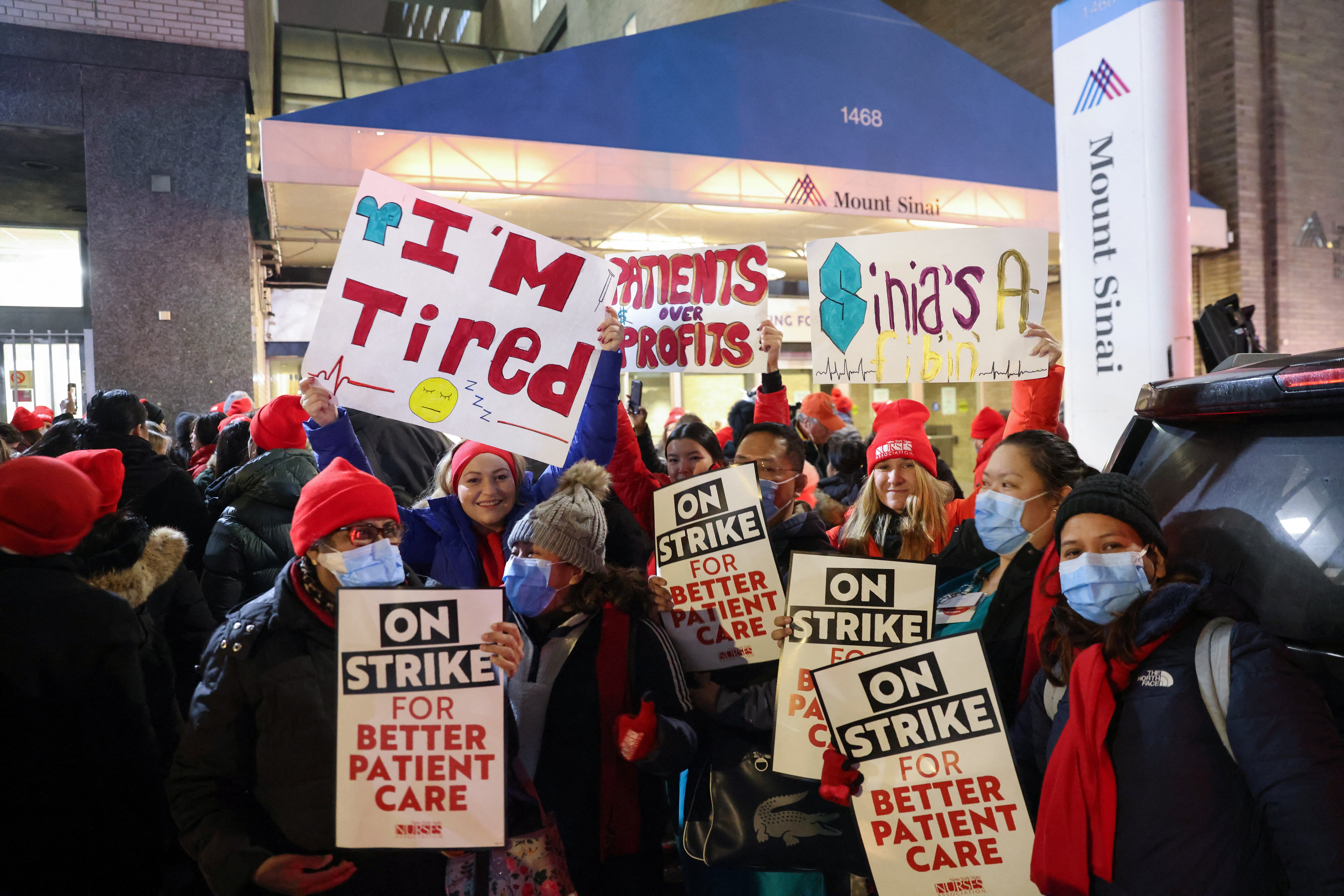
More than 7,000 nurses at two New York City hospitals have gone on strike amid collapsing bargaining talks.
The strike began at 6am on Monday after talks didn’t find a resolution overnight.
While tentative deals had been struck in the last few days for nurses at multiple hospitals, negotiations failed at Mount Sinai Hospital on Manhattan’s Upper East Side and three Bronx locations of the Montefiore Medical Center.
The New York State Nurses Association said in a statement on Monday that “after bargaining late into the night at Montefiore and Mount Sinai Hospital yesterday, no tentative agreements were reached. Today, more than 7,000 nurses at two hospitals are on strike for fair contracts that improve patient care”.
On Monday morning, there were hundreds of nurses and supporters, covering two blocks of the city. Even as the picket line entered the street, momentarily stopping traffic, truckers driving by honked their support, CNN reported.
Both of the hospitals struggling to find agreements with staff said on Monday that negotiations had fallen apart.
Mount Sinai spokesperson Lucia Lee told CNN that the leadership of the New York State Nurses Association (NYSNA) “walked out of negotiations shortly after 1am ET, refusing to accept the exact same 19.1% increased wage offer agreed to by eight other hospitals, including two other Mount Sinai Health System campuses, and disregarding the governor’s solution to avoid a strike”.

Montefiore Medical Center called it “a sad day for New York City”.
“Despite Montefiore’s offer of a 19.1% compounded wage increase — the same offer agreed to at the wealthiest of our peer institutions — and a commitment to create over 170 new nursing positions … NYSNA’s leadership has decided to walk away from the bedsides of their patients,” the centre said.
While NYSNA has agreed to the same pay increases at other hospitals, it argued that its members at Mount Sinai and Montefiore were being overworked.
NYSNA President Nancy Hagans told the press on Sunday that “we need management to come to the table and provide better staffing”.

The union argues that the strike action is an effort to improve care for patients.
“Going into the hospital to get the care you need is NOT crossing our strike line. Patients should seek hospital care immediately if they need it,” the union said in a statement. “We would rather be the ones providing that care, but our bosses have pushed us to be out here instead.”
Ms Hagans said that Montefiore has 760 nursing positions waiting to be filled, and that “too often one nurse in the emergency department is responsible for 20 patients instead of the standard of three patients”.
New York Governor Kathy Hochul pushed the union and management to agree to binding arbitration as a path beyond strike action. While hospital management agreed, the union didn’t.
“We will not give up on our fight to ensure that our patients have enough nurses at the bedside,” the union replied to the suggestion.

New York Mayor Eric Adams urged all parties to “remain at the bargaining table for however long it takes to reach a voluntary agreement”.
The affected hospitals have been making preparations for the strike following the notice shared by the union ten days ago. They planned to bring in temporary “travelling” nurses to fill in the gaps and some facilities had started to move patients, according to CNN.
The union argues that the hospitals will have to spend more to bring in temporary staff and that the hospitals should instead agree to the union’s proposal.
“As nurses, our top concern is patient safety,” Ms Hagans said on Friday in a statement. “Yet nurses … have been forced to work without enough staff, stretched to our breaking point, sometimes with one nurse in the Emergency Department responsible for 20 patients. That’s not safe for nurses or our patients.”
“Mount Sinai is dismayed by NYSNA’s reckless actions,” the hospital said in a Friday statement. “The union is jeopardizing patients’ care, and it’s forcing valued Mount Sinai nurses to choose between their dedication to patient care and their own livelihoods.”







